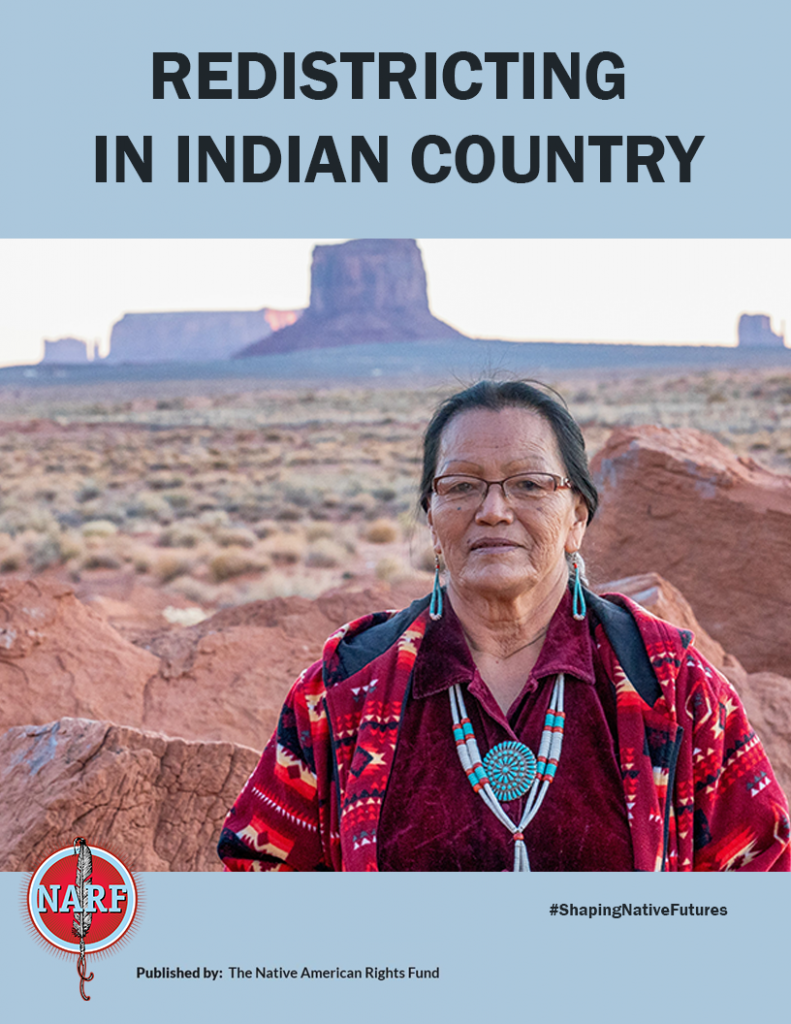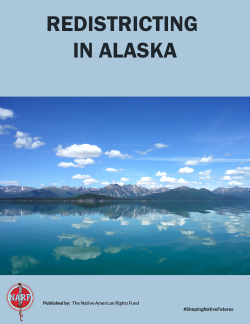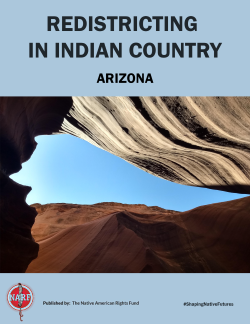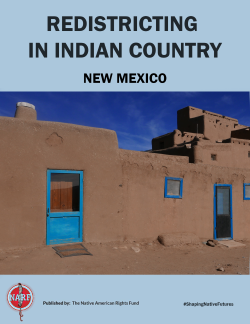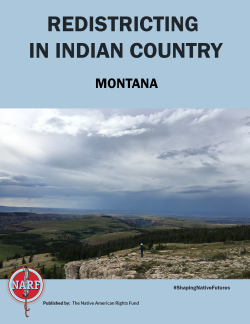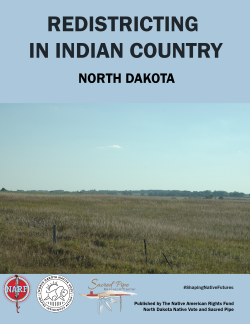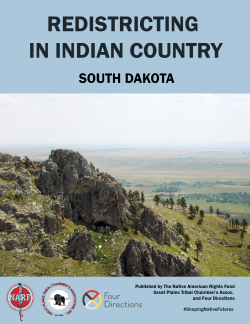#ShapeNativeFutures
Fair districting empowers Native communities to have appropriate resources and representation.
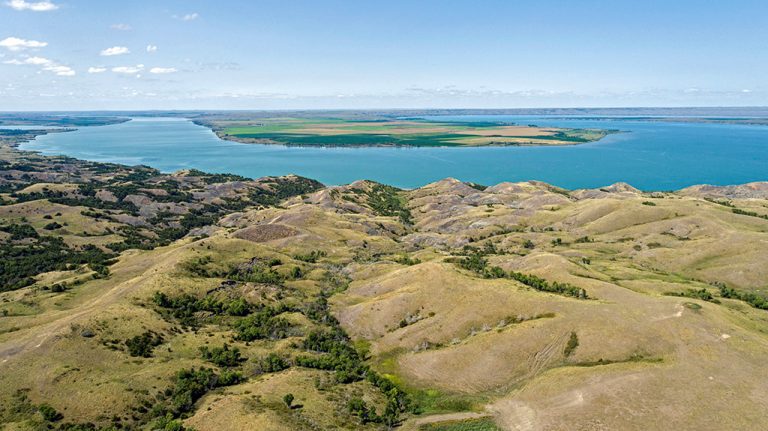
An at-large election system in Lyman County, South Dakota, made it impossible for Lower Brule Sioux Tribe reservation voters to elect local representation for 30 years. Individual voters and the Tribe filed a lawsuit in May 2022 after the county adopted a 2020 redistricting cycle plan that would delay any opportunity for representation until 2026. Learn More
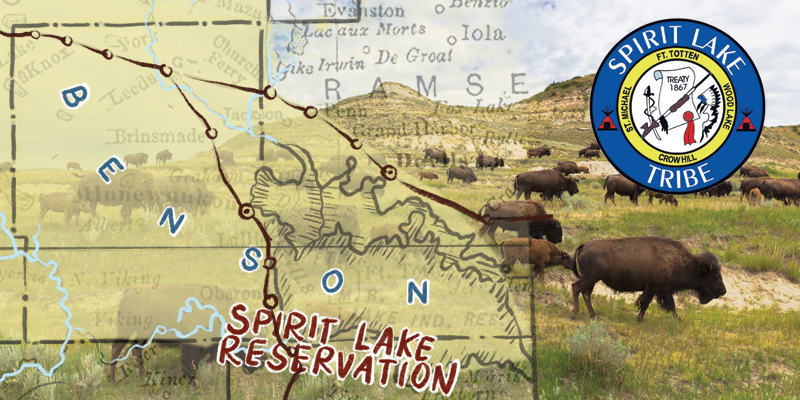
The Spirit Lake Tribe and individual voters have filed a lawsuit against Benson County, North Dakota, for adopting a redistricting plan that violates the rights of Native voters. In response to a Native population increase of 17%, Benson County abandoned its previous district system altogether and adopted an at-large voting system that prevents the increased number of Native votes from having an impact in elections. Learn More
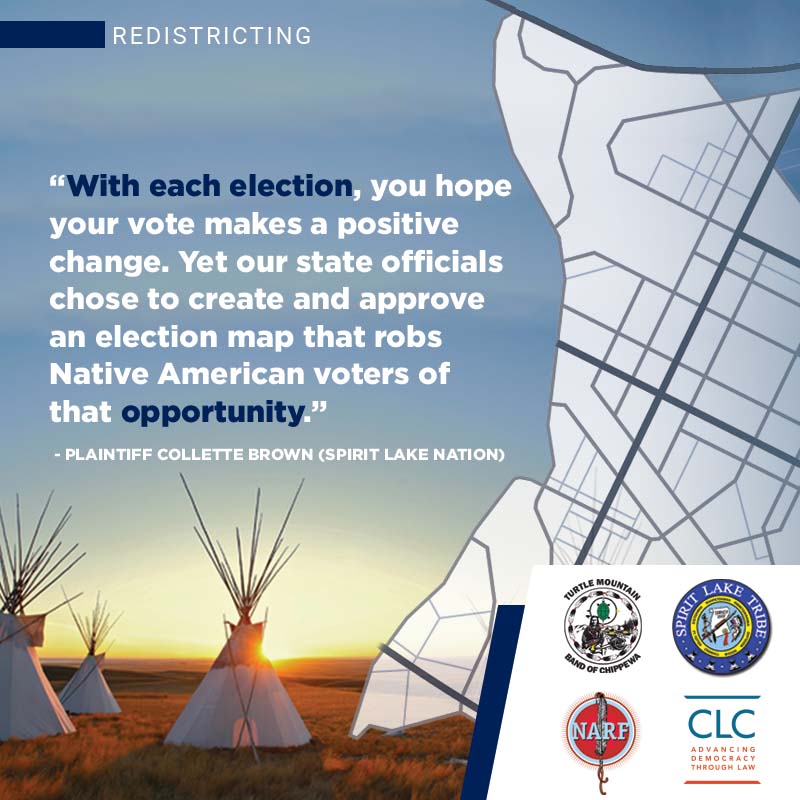
The Spirit Lake Tribe, the Turtle Mountain Band of Chippewa Indians, and several individual voters filed suit challenging North Dakota’s state legislative map, as unlawfully diluting the voting rights of Native Americans in violation of Section 2 of the Voting Rights Act (VRA). Learn More
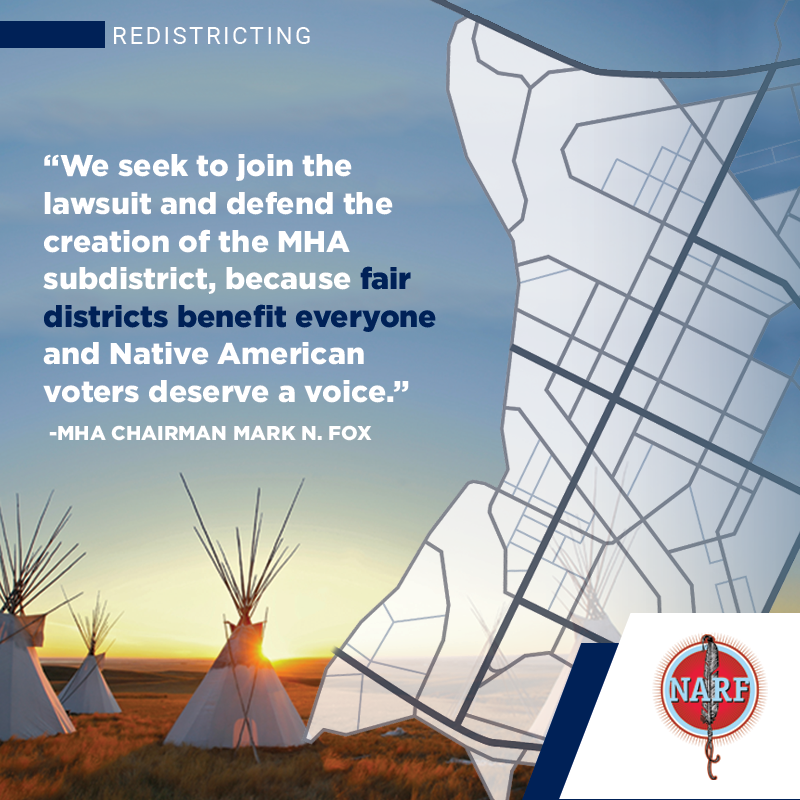
The Mandan, Hidatsa and Arikara Nation and individual voters requested the Native American Rights Fund assist them in joining a lawsuit against two Republican officials seeking to eliminate the majority Native-voter state legislative subdistrict that encompasses the Fort Berthold reservation in North Dakota. Learn More
Coming together and taking action during redistricting affects your community’s access to resources for the next 10 years. A fair map is a first step to addressing centuries of sustained, systemic racism.Want to let others know about fair districting and how it can affect Native people?
Redistricting Resources:
National
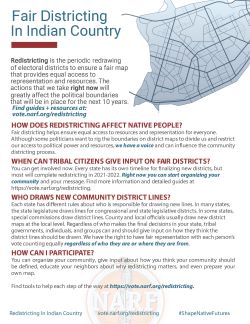
Alaska
Arizona
New Mexico
Montana
Frequently Asked Questions
What is redistricting?
Redistricting is the constitutionally required redrawing of the geographic lines that divide districts for the U.S. House of Representatives, state legislature, county board of commissioners, city council, and local school board. It usually takes place every ten years, after the United States conducts a census to determine how many people live in the United States and its territories.
The main goal of redistricting is to ensure that districts have the same number of people. This protects the American constitutional right to have a vote that is equal to any other person’s vote. By redrawing the lines every ten years, the government can make changes based on where people have moved or where populations have increased or shrunk.
It is crucial that Native Americans and Alaska Natives have an equal voice in redistricting, which helps give voters the ability to elect candidates of their choice. How can your Native community participate in this process? How can you ensure that your political power is protected?
Why is redistricting important?
Redistricting is important because it controls access to political representation in the United States. It influences who runs for office and who is actually elected. Elected representatives make many decisions that influence our daily lives, from acknowledging tribal sovereignty to honoring treaties to approving extraction on tribal lands. And the people who live in the representative’s district can call on them to help make positive change.
When people are represented through districts, the U.S. Constitution requires that those districts have roughly equal populations. This requirement ensures that each person’s vote is worth the same as any other person’s. Because populations change over time, districts have to be redrawn to make sure that populations in each district stay equal. Otherwise, the voting power of a particular community would be diluted. For example, one state legislator might represent 45,000 constituents, while another only represents 20,000. The people in the smaller district would have proportionately more representation, making the system unfair.
What about gerrymandering?
Even when districts have nearly equal populations, a particular map can still limit a certain group’s political power. This abuse of redistricting is called gerrymandering. Often it is used to exclude communities from political power completely. Even if we have 100% voter turnout in an election, gerrymandering can mean that we still lose because the system is rigged against us.
Maps often dilute votes in two ways. First, a map can “crack” minority voters into many districts, where they are a small percentage of the population in each. This leaves them unable to elect their representative of choice, despite having enough votes to do so. In the image below, gray voters have been cracked in the third map, leaving them without control of any districts, even though they represent forty percent of the population. Second, a map might “pack” minority voters into one district, when if they were spread out in multiple districts they would have more political power. In the final map in the image below, most of the blue voters have been packed into two districts, and the rest of the blue voters have been cracked up in the other districts. This leaves the blue voters with forty percent of the districts, even though they are sixty percent of the population.
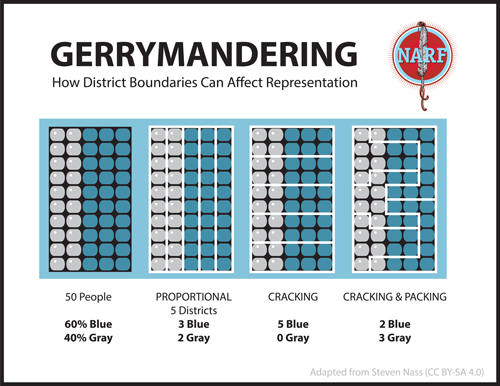
When voters are unfairly “packed” or “cracked,” even turning out every voter usually will not be enough to win an election. This is why redistricting is so important.
In order to prevent this sort of gerrymandering, it is necessary for Native Americans to advocate for their communities in the redistricting process. This is our chance to create a fair system that will stay in place for the next ten years.
How can I participate?
Even though redistricting officials are in charge of making final decisions about how to draw district lines, everyone can and should participate in that process. Tribes, individual people, and groups can tell officials how they think the district lines should be drawn.
In order to participate, you first want to learn the basic rules of redistricting. Many of those rules are summarized in the toolkit: Redistricting in Indian Country. However, they are different for every state. NARF is preparing state-specific guides for several states and they will be made available on this webpage when they are finalized.
Next, you should organize your Native community. (Download the organizing checklist.) Find others who are interested in redistricting and educate your neighbors about why this process is important for Indian Country. As a community, you should talk about your goals. What issues are important to you – clean water, Indian child welfare? What levels of government control those issues? Do you want to propose a single district or an entire map?
Part of this advocacy will require you to define your community. The people living on your reservation or in your village may be in your community. But there may be others as well. Think about what other reservations, villages, or areas have similar, shared interests.
Once you’ve defined your community, you can advocate to the redistricting officials and to the public generally that your reservation or village should be kept together in a district. Or if you have a large community, you may want to provide advice about how to fairly divide the community into multiple districts that maximize your political power.
Redistricting is a powerful tool that can be used to suppress or advance Native political power. You have the ability to make a meaningful impact on how your community is shaped for the next 10 years. We are here to help. If you have questions or need assistance, contact us at vote@narf.org.
Tools to Help You Take Action:
Prepare to testify at public meetings on behalf of your tribe or community.
